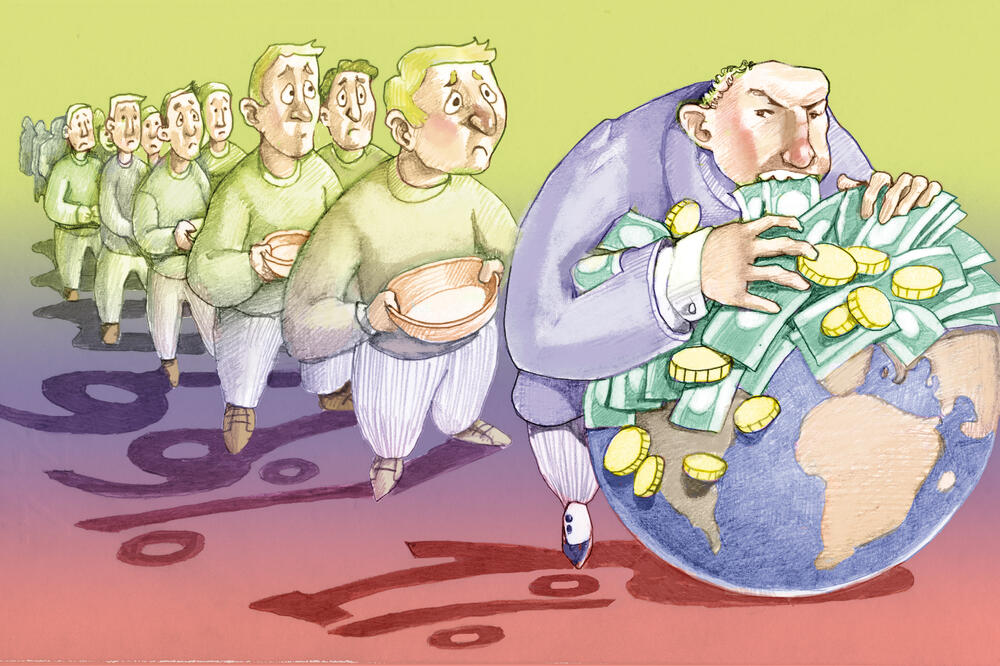What is the Gini coefficient in simple terms.


In economics and the financial system, there are certain indicators. Some of them are used for calculations, while others simply reflect a certain process. For example, the number of wealthy people. A good example can be the Gini coefficient.
The Gini coefficient is a simple indicator that measures the level of what can be called inequality. It refers to the distribution of income, that is, wealth in society. Therefore, what the Gini coefficient indicates is the reflection of how resources are distributed among the population.
What does it mean in simple terms: what is it for each person?

Thus, the Gini coefficient is a simple and quite understandable indicator of inequality in society. However, this coefficient does not pertain to fairness, positive or negative aspects. It merely reflects the situation and does not influence it in any way. It helps understand how evenly resources are distributed among the population. The closer the Gini coefficient value is to zero, the more uniform the distribution. If the value is close to one, it indicates significant inequality.
Who needs this coefficient and why?

This coefficient has its well-defined areas of application. Here is what it relates to:
-
Analysis of a specific situation, usually the state of the economy in the world. It helps understand how fairly income is distributed in a country.
-
It also allows comparison of situations in different countries. It enables the assessment of the level of inequality in different states.
-
It helps in making political decisions. It assists governments in developing measures to reduce inequality.
Often this coefficient is used for research and social calculations. It is used by scientists to analyze social and economic trends.
How does the coefficient work?

The Gini coefficient is calculated based on the Lorenz curve, which shows the distribution of income in society. To put it simply, the coefficient is related to a much simpler algorithm:
-
First, data needs to be gathered. That is, information about the income or wealth of the population is collected.
-
Next, the Lorenz curve needs to be constructed. The distribution of income is depicted in the form of a graph.
-
Then the area is calculated. The area between the line of equality and the Lorenz curve is calculated.
-
Only after that can the coefficient be calculated. The value of the Gini coefficient is found as the ratio of the area to the total area under the line of equality.
This coefficient has a simple formula. It includes the area between the line of equality and the Lorenz curve and the area under the Lorenz curve.
It is important to note the range of values of the Gini coefficient. Its value ranges from 0 to 1. In this case, 0 represents complete equality, where everyone has the same income, and 1 indicates maximum inequality, where all income is concentrated in one person.
In real life, values usually lie between these extremes.

To understand how such calculations are made, it is helpful to use an example. For instance, in Ukraine, the Gini coefficient is used to assess the level of social and economic inequality. Here are some examples:
-
Comparing regions. Analyzing the distribution of income between different regions of the country.
-
Assessing the impact of reforms. Studying changes in inequality levels after implementing economic or social reforms.
-
International comparisons. Comparing Ukraine with other countries to assess its position in a global context.
It should be noted the advantages of using such a coefficient. Here is what it entails:
-
It is quite simple. The index is easy to interpret and use.
-
It is quite universal. Suitable for analyzing various societies and Time periods.
-
This coefficient provides clarity. Graphical interpretation using the Lorenz curve makes the data understandable.
However, a few words need to be said about the drawbacks of the Gini coefficient. They also present limitations. Here is what it refers to:
-
The coefficient does not account for factors. It does not show why inequality arose.
-
It does not reflect absolute wealth. It focuses only on distribution, rather than the overall level of income.
-
It is sensitive to data. The results depend on the quality and completeness of the underlying data.
So, it cannot be said that this coefficient is only helpful.
How to improve the Gini coefficient?

In theory, the coefficient can be improved under certain conditions, which reduce inequality.
To reduce the level of inequality, the following steps can be taken:
-
Improving education. Increasing access to quality education for all levels of the population.
-
Creating jobs. Developing the economy and stimulating entrepreneurship.
-
Fair tax policy. Introducing progressive taxation for the wealthy.
-
Social programs. Supporting the less fortunate through subsidies and other measures.
Based on this, the Gini coefficient is an important tool for analyzing the level of inequality in society. In Ukraine in 2024, its use helps to better understand the economic situation and develop measures for improvement. Despite some limitations, this indicator remains one of the most popular for assessing social justice. By reducing inequality, the country can achieve sustainable development and improve the quality of life of its population.
If we answer the question of whether this coefficient is needed, it is more suitable for theory. That is, for studying certain aspects of both the social sphere and the global economy. Often, the coefficient reflects the gap between the relatively underprivileged and the affluent population. This applies both globally and to individual countries. Hence, the Gini coefficient is valuable, but not perfect. It has many useful areas of application, but it is not truly necessary for everyone. Overall, the Gini coefficient is still popular, but not as universal as it may seem. Therefore, to use it, a significant amount of analytical data needs to be gathered.
Read also
- What is emission in simple terms
- What is an embargo in simple terms
- What is a moratorium in simple words
- What is debt consolidation in simple words
- What is institutionalism in simple terms
- Minimum Living Standard: What It Is and How It Is Calculated








